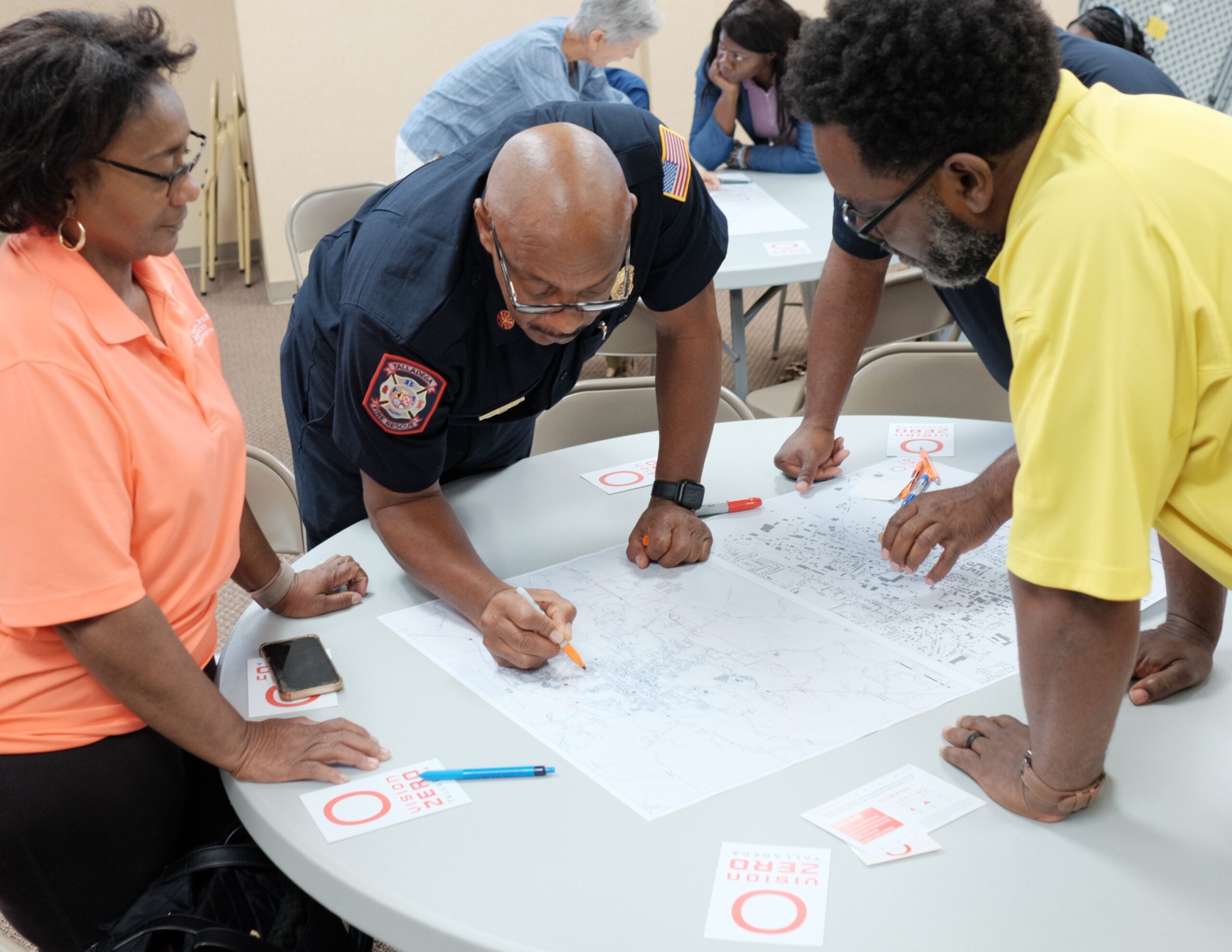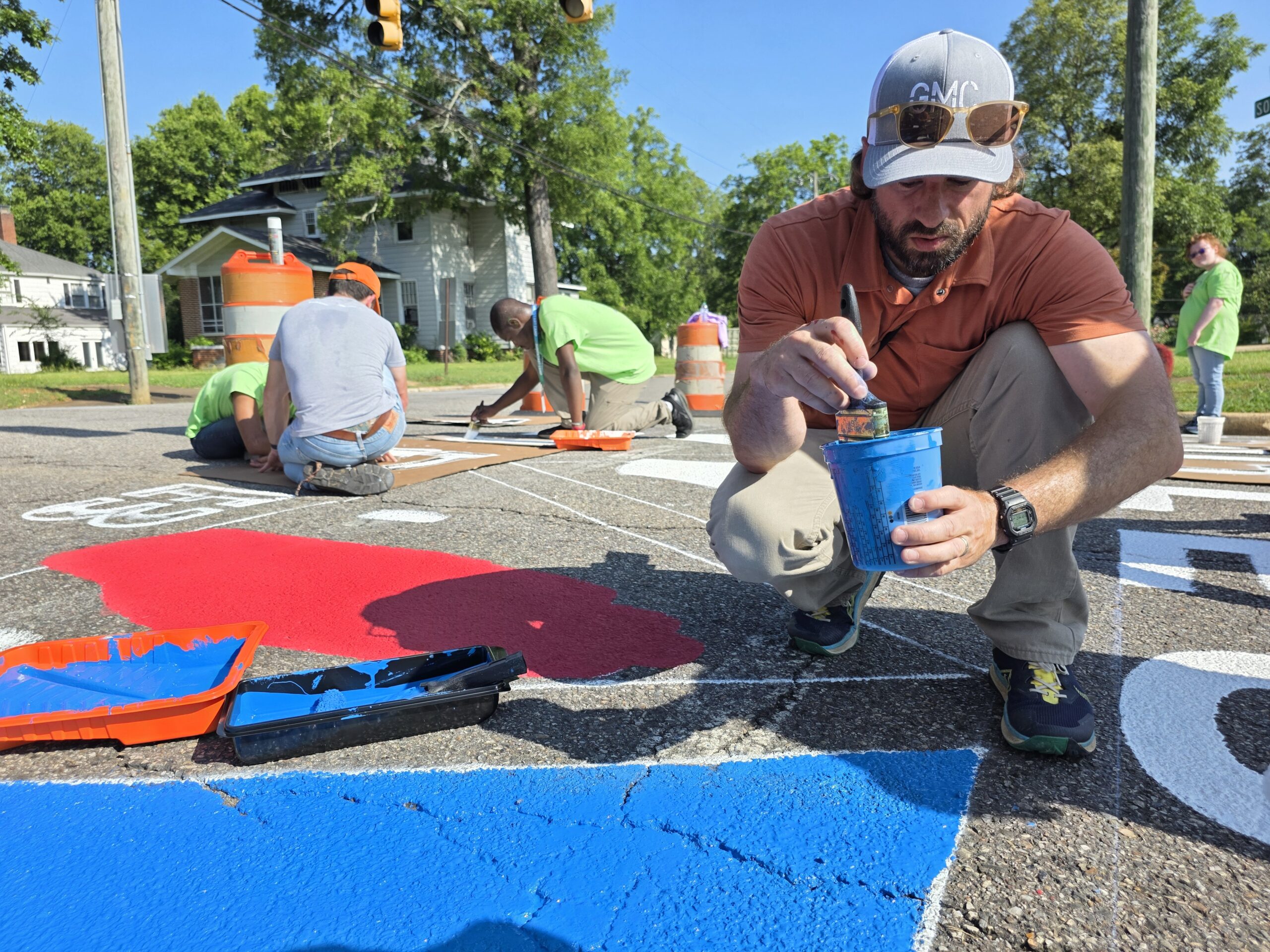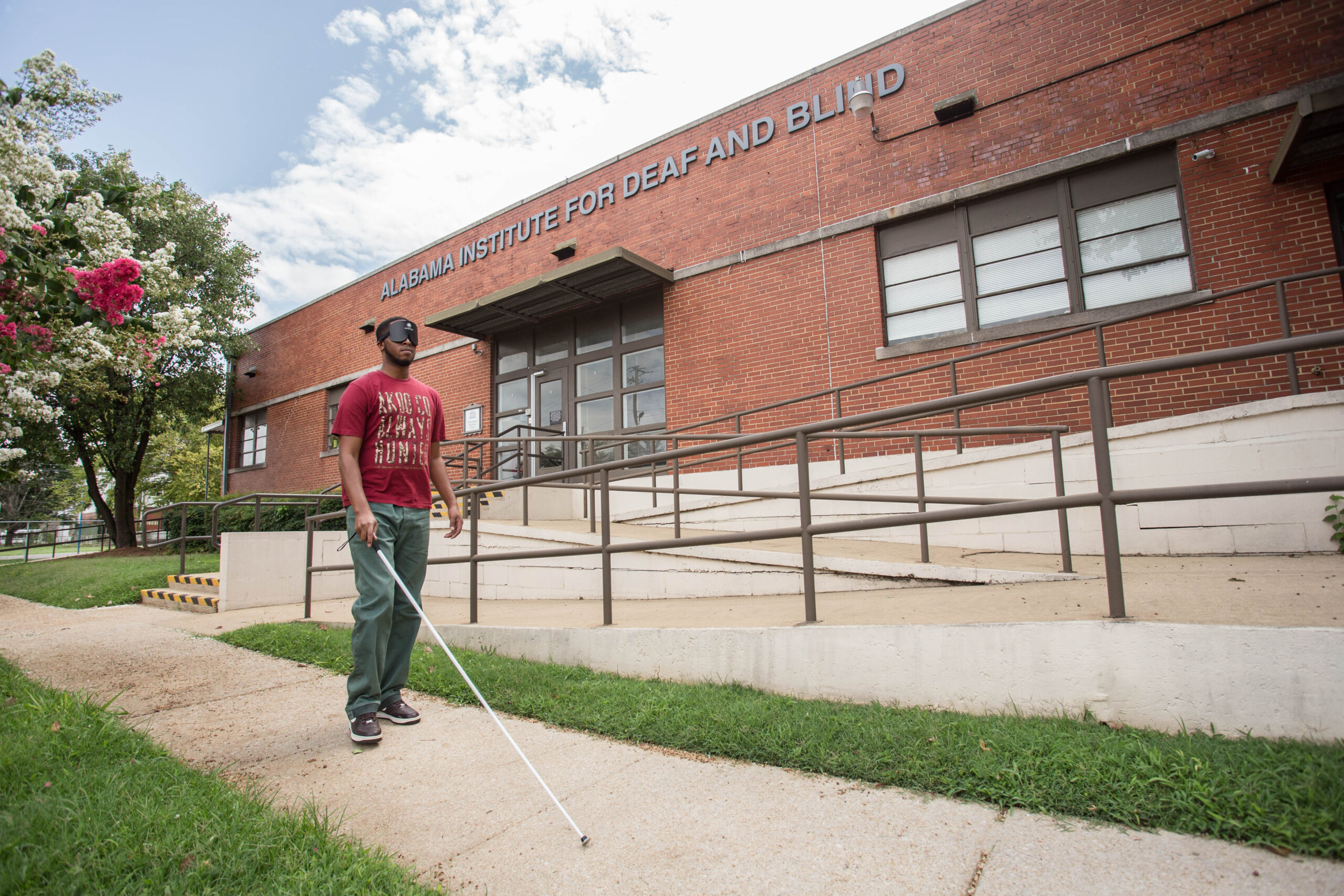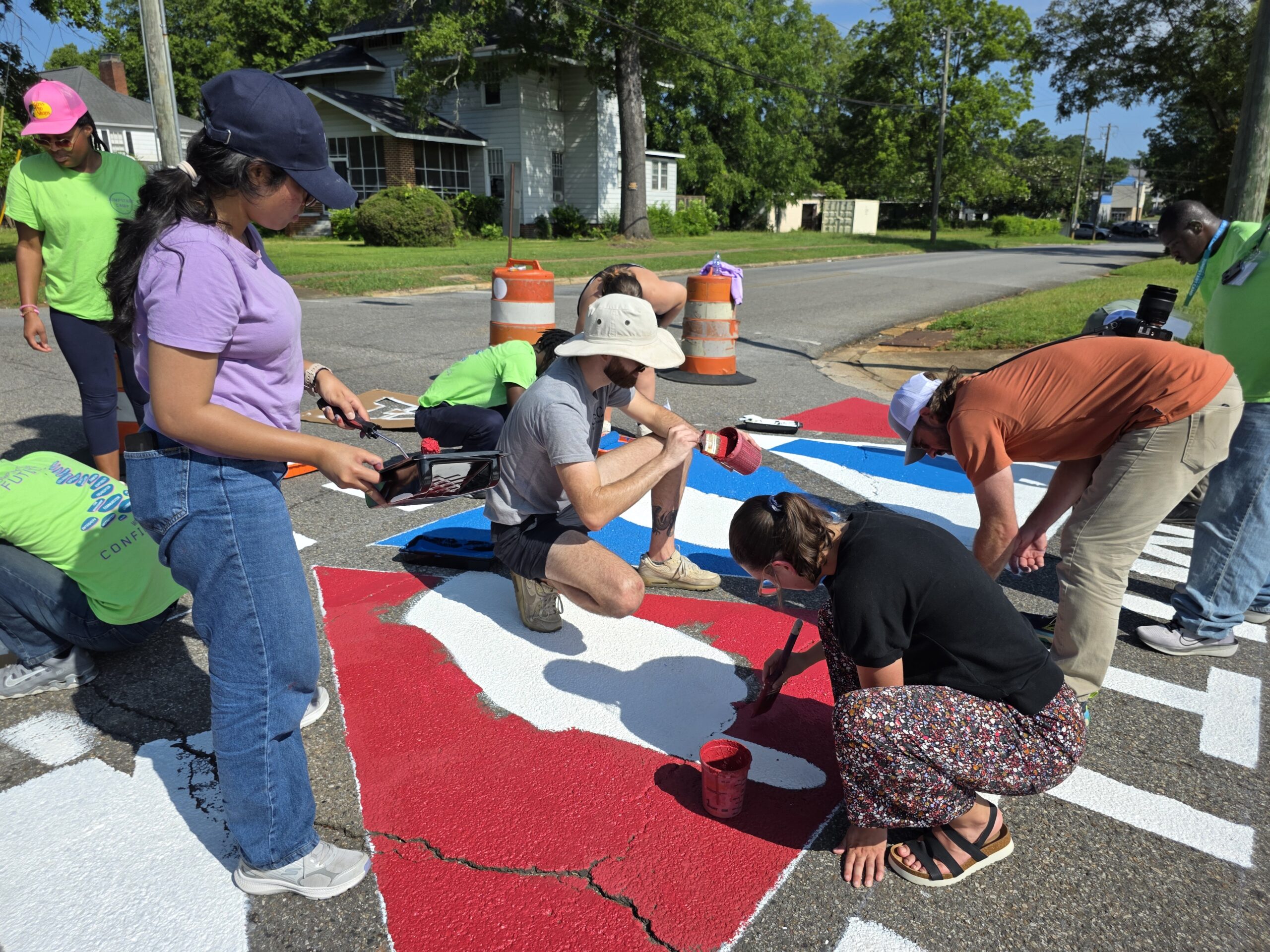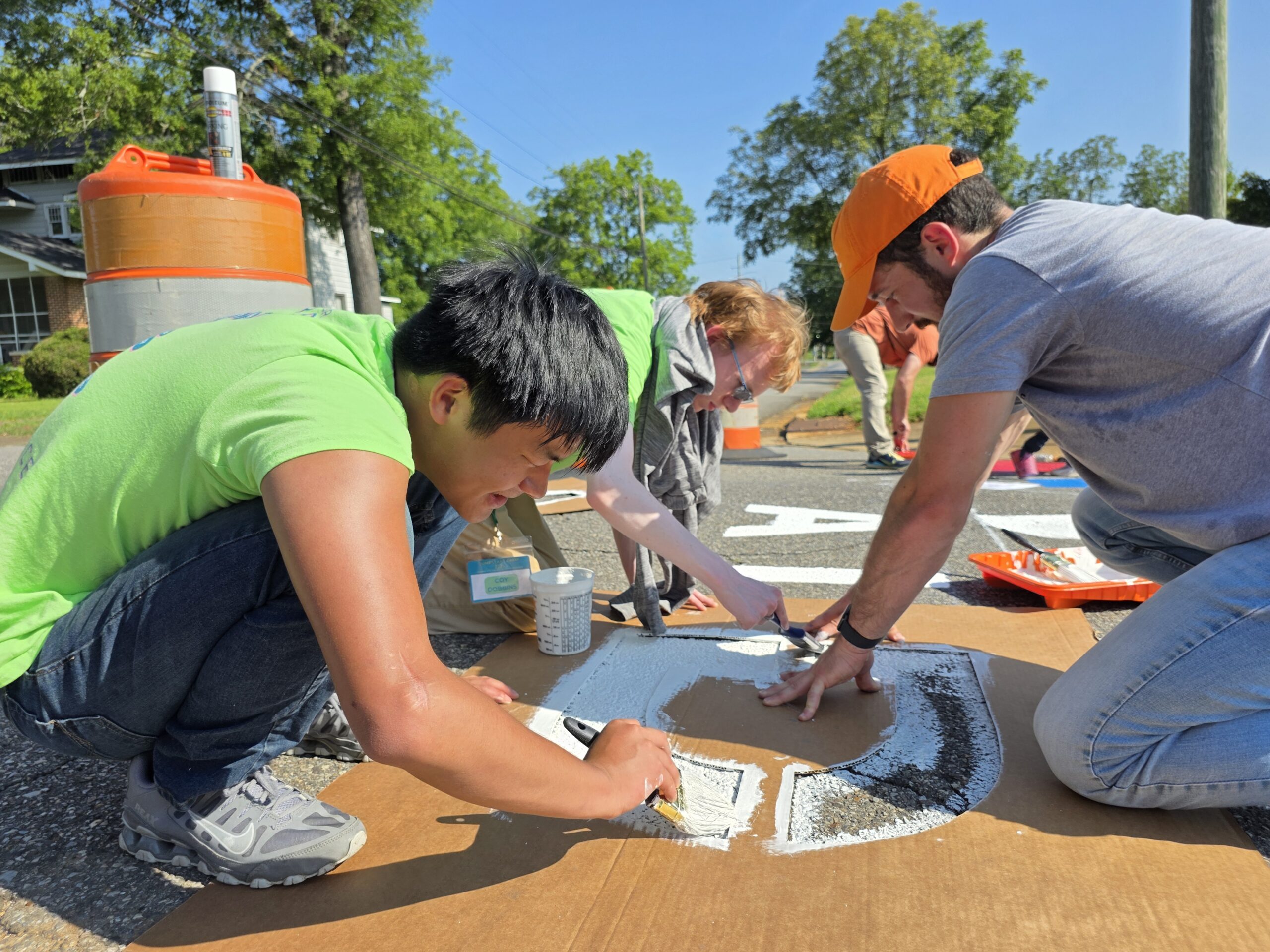The Vision Zero Talladega plan has an ambitious goal of eliminating serious traffic injuries and fatalities by creating a safer, healthier, and equitable environment for all road users. To make that vision a reality, Goodwyn Mills Cawood (GMC) teamed up with the City of Talladega to create a Safety Action Plan that rethinks the traditional approach to traffic safety from the ground up.
The project team worked alongside city staff to hold three community meetings, connecting with residents. Each one brought together a wide mix of people who represent a big share of the community and are frequent users of the road network. At each session, the team gave a quick overview of Vision Zero, shared the latest crash data and community feedback, and then opened the floor for questions. Attendees also took part in hands-on activities to share their own ideas and input.
Vision Zero became a necessity after realizing a troubling trend where about 3% of Talladega’s population is involved in a crash each year. Between 2017 and 2024, there were 23 lives lost, and 81% of those tragedies happened in car crashes. The most common factors came from running red lights, unsafe turns, speeding, impaired driving, distracted driving and poor street design.
After speaking with the community and doing local research, the GMC team was able to focus on three themes for the action plan: build complete streets, reduce speeding and eliminate distracted driving.
That research also revealed which streets and intersections pose the highest risk. As a result, one of the top recommendations was to focus on these high-injury spots first, using quick-build fixes that could later be turned into long-term improvements. Additionally, the team suggested reevaluating speed limits, improving street design and adding bike and pedestrian infrastructure.
Talladega is home to several prominent state institutions that make up a large population of the community. Talladega College, the oldest HBCU in Alabama, and the Alabama Institute for the Deaf and Blind (AIDB), which is one of the city’s largest employers, are two major pillars. Together, they bring unique challenges but also a big opportunity to meet important needs and build a safe transportation network for everyone.
GMC took time to work closely with AIDB to spearhead some of the projects originally suggested. The team designed, created, and painted a crosswalk on one of the primary travel routes for AIDB students. Students from the institute were able to be part of the process every step of the way, including design and messaging workshops for the crosswalk, and then painting the crosswalk themselves. The design includes high contrast colors, sign language and a graphic version of braille that spells out AIDB to not only create awareness for citizens, but to be a practical aid for the institute’s students.
The above institutions are not the only local educational facilities impacted by these statistics. Many of the city’s K-12 public schools are within close proximity to the high-risk areas. That’s why Safe Routes to School is a critical addition to the Vision Zero plan. Safe Routes to School is a program that promotes safe, convenient and enjoyable walking and biking for children traveling to and from school. The program involves community members, school staff, and transportation professionals in creating safer routes and shifting travel norms.
This action plan shows the City’s commitment to reducing serious traffic injuries in the years ahead and has several tools and methods it will use to track how the Vision Zero Action Plan is moving forward. GMC has shown Talladega that from now through 2030, the city can meet its goal of having zero fatalities heading into the next decade.
